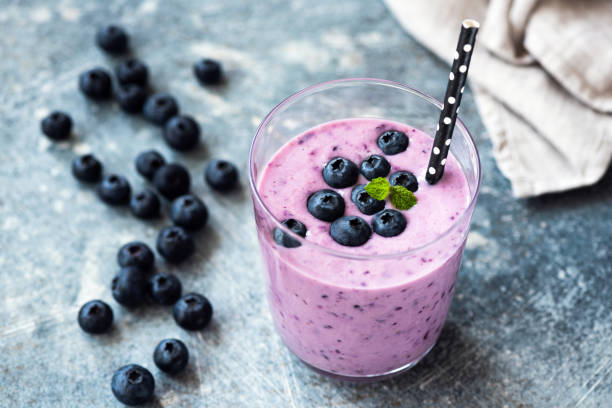Is there anything as versatile, adaptable and convenient as a smoothie? I doubt it. Nor are there many things as universally beloved. Smoothies are scrumptious, indulgent concoctions that tickle the taste buds and, inexplicably, with every sip make you feel just a little bit happier and make the world a little bit friendlier. The smoothie is so much greater than the sum of it’s parts. And just to prove the smoothie can do no wrong, it can actually make you more awesome too.
Smoothies contain a smorgasbord of ingredients, and depending on what you throw in, smoothies can ascend from mere flavorsome delight and sweet-tooth satisfier to the dizzying heights of muscle-building, energizing, health-enhancing superdrink. Why eat just one superfood, when you can combine a load of goodness into one easily digestible drink? Plus, it’s super quick and absurdly easy to prepare, making it weirdly efficient not just nutritionally, but generally. Created in the 1940’s, but perfectly designed for 21st century living.
Smoothies can be tailored to suit your own needs. And while the flavors are virtually limitless, don’t just think about taste, but also why you’re making it. Do you want to lose weight or perhaps build muscle? Do you need a pick-me up or extra energy to power through an intense workout? Had a bad day and want to wind down? Or maybe you can’t get to sleep. With a little smoothie science, you can easily make a smoothie that doesn’t just taste good (or look pretty), but actually does something.
Just be sure to make your own smoothies. Firstly, it’s a lot cheaper. Secondly, and more importantly, you’ll actually make a better quality smoothie at home, compared to any smoothie you could buy. Your ingredients are fresh or frozen fresh; you’re not adding a ton of sugar to make it taste better or weird stuff to make it look prettier. Bottom-line is, you know what’s in it. Unfortunately, the raison d’être of smoothies appears to largely have been forgotten, and bought smoothies are less healthy, and more calorific than ever before. So, do yourself a favor and make your own.
The sweetness of your smoothie heavily depends on the ripeness of the fruit you add. If you find your smoothie needs a little more sweetness, try to avoid sugar (if you must, use brown sugar), and instead add a little honey (preferably Manuka!), cinnamon (sweetens without actually adding calories), xylitol, stevia, figs or dates.
1. PRE-WORKOUT SMOOTHIE
The idea of a pre-workout snack is to make sure you have enough energy and sufficient stamina to give your workout all you’ve got. If you’re hungry, you’ll lack energy and drive, which means you won’t be exercising as hard you could. Some people can get away with exercising on an empty stomach, but if you’re the kind of person who has to eat little and often to avoid feeling faint (or road rage), you’ll definitely do well to have a little something before your workout.
The ideal pre-workout snack should be easy to digest (to avoid an upset stomach during your workout) and rich in carbohydrates. Consume the smoothie at least 30 to 60 minutes before, depending on how much you’ve drunk/ how hungry you are and what’s in it. Remember, you only want to fuel up enough to bring your A-game. A pre-workout smoothie is not an excuse to down a days worth of calories from a smoothie bar. For maximum performance, keep it little and light.
- ½ cup frozen strawberries/ blueberries/ mixed berries
- ½ banana
- ½ cup low-fat Greek yogurt
- ¼ cup milk (skim/ almond/ soy) – enough to get your preferred consistency
- Ice cubes
2. POST-WORKOUT SMOOTHIE
After a strenuous workout your main goal is to hydrate, replenish glycogen stores and jumpstart muscle recovery. A post-workout smoothie should be made of carbohydrates and plenty of protein; it should also be relatively easy on the digestive system and quickly processed by the body. Just like pre-workout, a post-workout smoothie is not an excuse to down a pint or two of smoothie drink – its purpose is purely functional. Be sure to drink up within 30 minutes to 2 hours after your workout. If you’ve been exercising at moderate to high intensity for longer than 60 minutes, try to re-fuel within 30 minutes.
- 1 dash of cinnamon (helps regulate and keep blood sugar levels steady)
- 1 Tbsp natural peanut butter (or almond butter)
- 1 medium banana (preferably frozen for extra creaminess)
- 1/3 cup low-fat vanilla yogurt
- 1/2 cup almond milk
- 1 cup ice
To boost nutritional content try adding a handful spinach or kale.
3. MUSCLE BUILDER
Building muscle is not just about strength training, but ensuring you’re meeting your body’s nutritional needs and providing your body with sufficient protein. Research shows that consuming a protein rich smoothie post-workout can stimulate protein synthesis and muscle recovery, in other words aid muscle growth.
- 1 scoop chocolate whey protein
- 8 oz. low-fat chocolate milk
- 1 medium banana (frozen)
- Ice
4. WEIGHT LOSS SMOOTHIE
The goal here is to create a smoothie packed with nutrients that is super filling, but low in calories, that you can have for breakfast or lunch. In other words, it’s not a snack (i.e. in addition to regular meals), but a meal replacement (instead of meals). To make a meal, a smoothie needs to include carbohydrates, protein and a little fat. Fat is important because helps you feel full, as does protein.
- 1 tablespoon chia seeds
- 1 scoop whey protein powder
- ½ medium banana
- 1 cup frozen mixed berries
- ¾ cup milk (skim/ almond/ soy)
- 3 to 5 ice cubes
Mixed berries (carbohydrates) provide energy and are packed with vitamins, minerals, fiber, and are a natural sweetener. Chia seeds are incredibly rich in omega-3 fatty acids (healthy fat), protein antioxidants, vitamins and minerals. Chia seeds also contain super high levels of soluble and insoluble fiber, making them uncannily filling and a great addition to low-calorie smoothies.
Filling smoothie ingredients: chia seeds, ground psyllium husks, whey protein, low-fat Greek yogurt.
5. BELLY BUSTER
To make a belly-busting smoothie, add a source of MUFAs (monounsaturated fatty acids) and to aid weight loss add low-fat yogurt. Research shows that MUFAs help target belly fat, and yogurt has been shown to aid weight loss and reduce bloating (read more here).
- 1 Tbsp cold-pressed organic flaxseed oil (MUFA)
- 1 cup frozen unsweetened blueberries
- 3/4 cup milk (skim/ almond/ soy)
- 1/4 cup low-fat Greek yogurt

